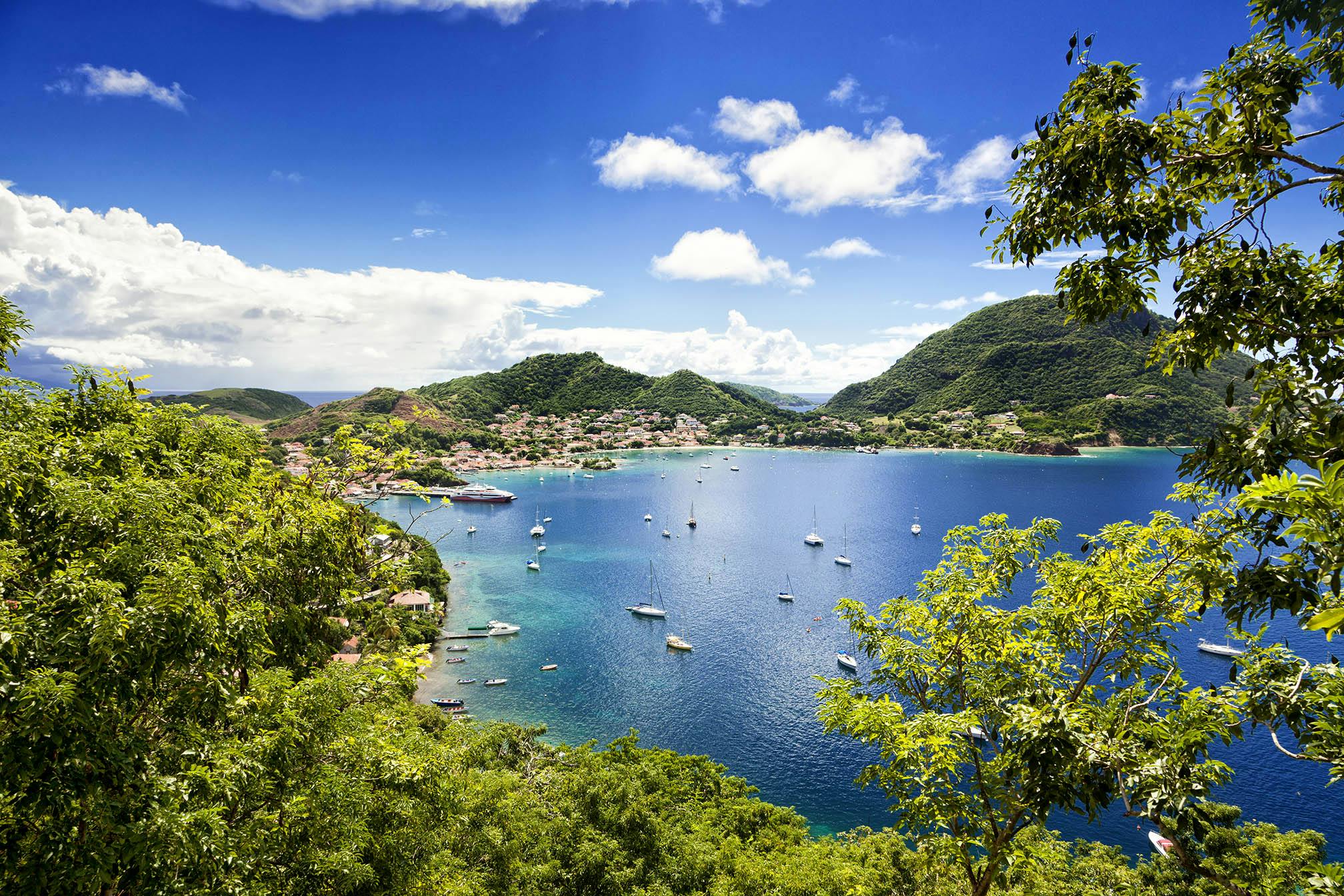The Road Less Sailed: 6 Top Caribbean Destinations You Should Discover
When the season’s first blizzard lands, it’s easy to lump the entire Caribbean into one tantalizing stew: sun, sea, sand. Who needs anything more? Leave it to the former editor of Caribbean Travel & Life magazine to put us straight when it comes to choosing top Caribbean destinations. “To reduce the Caribbean to a bunch of islands that all have the same beaches and palm trees does such a disservice,” sighs Sarah Greaves-Gabbadon, self-described “Carivangelist” who blogs today under the name JetSetSarah. “From the food, the culture, the topography, the people, the language — it’s a vast and beautifully diverse patchwork.”
I’ve had the pleasure of discovering various corners of this paradise during more than three decades of in-person research while on Caribbean trips for JetSetSarah and others. With all due respect to the bustling, larger islands, full of zip lines and shopping and swim-up pool bars, it’s the lesser-known bantam destinations I revel in — islands that never see big cruise ships calling on their ports, nor jets landing on their tiny air strips, if they have one.
On the other hand, Silversea Cruises specializes in carefully curated itineraries to the back of beyond, including the Caribbean. Here are six of my favorite islands to visit and all of these are included on select Silversea Caribbean voyages.
Bequia

Why Bequia? Other top Caribbean destinations offer longer beaches, flashier resorts and more productive shopping sprees, but none have the backwater appeal of sweet little Bequia (pronounced beck-way), the first of the Grenadines unfurling south of St. Vincent like the tail on a kite. The six-square-mile outpost is blessed by a spindly shape scalloped with sandy coves and favored yachting harbors. It feels a bit like the Caribbean that yachties might have encountered in the 1960s — catnip to repeat visitors who endure a long haul to get here, but cherish the island’s simple and distinctly uncommercialized ambiance.
Don’t Miss: Sailing is in the blood of Bequians. Embark on a half-day sail by catamaran to visit cave homes at the eerie Moonhole, visit the old whaling station and stop off at one of the island’s white-sand coves for a dip and a rum punch.
The Best Beach: Princess Margaret is the prettiest beach, reached by a brisk one-mile hike over the headland or by dingy from the port. Or a taxi will drop you at less-visited Lower Bay, where ramshackle bars take care of guests with beach chairs, West Indian chicken or goat roti and tree swings.
Independent Meanderings: It’s a short ride over to Spring Bay, where you can take an informal tour of Firefly Plantation through orchards and a grove of sugar cane. The Sunday curry lunch is renowned.
Insider’s Tip: Follow the boardwalk fronting Port Elizabeth south to Mac’s for the best pizza south of Miami, or tuck into Jack’s at Princess Margaret, where a proper rum punch accompanies sandwiches and salads.
Take Me There: Silversea offers numerous itineraries that call on this slice of paradise, from eight-day escapades to comprehensive Caribbean circuits lasting two weeks or more.
Dominica

Not to be confused with the Dominican Republic, the Commonwealth of Dominica is the Caribbean’s steepest island — “tall is her body,” the indigenous Caribs called it. It might be the one outpost Columbus would recognize today, still robed magnificently in dozens of shades of green. You’ll trade white-sand beaches for black, and ascend through dense rainforest to smoldering volcanic vistas in Morne Trois Pitons National Park. It’s a World Heritage Site sheltering the region’s richest biodiversity, with mist-shrouded elfin woodlands, bountiful waterfalls, two species of endemic parrots and crater lakes — cold or boiling, take your pick. The natural attractions extend offshore to a rich marine landscape favored by humpbacks and other whales.
Don’t Miss: The swim through evocative Titou Gorge navigates a narrow slot draped in ferns and vines, fed by a waterfall at its end.
The Best Beach: Sand-lovers will want to make the long but highly scenic drive to undeveloped Batibou Beach, on the island’s north end. Caramel sands are fringed in coconut palms, and a beach bar is sometimes manned for libations.
Independent Meanderings: The three-mile roundtrip hike to Middleham Falls, the island’s tallest waterfall, is prime for active travelers.
Insider’s Tip: Divers love Dominica’s underwater world, and snorkelers get their fair share of fun, too, at Champagne, where warm, underwater steam vents sparkle effervescently just offshore.
Take Me There: Rouseau, Dominica’s capital city, is a port of call in numerous Silversea itineraries.
Jost Van Dyke
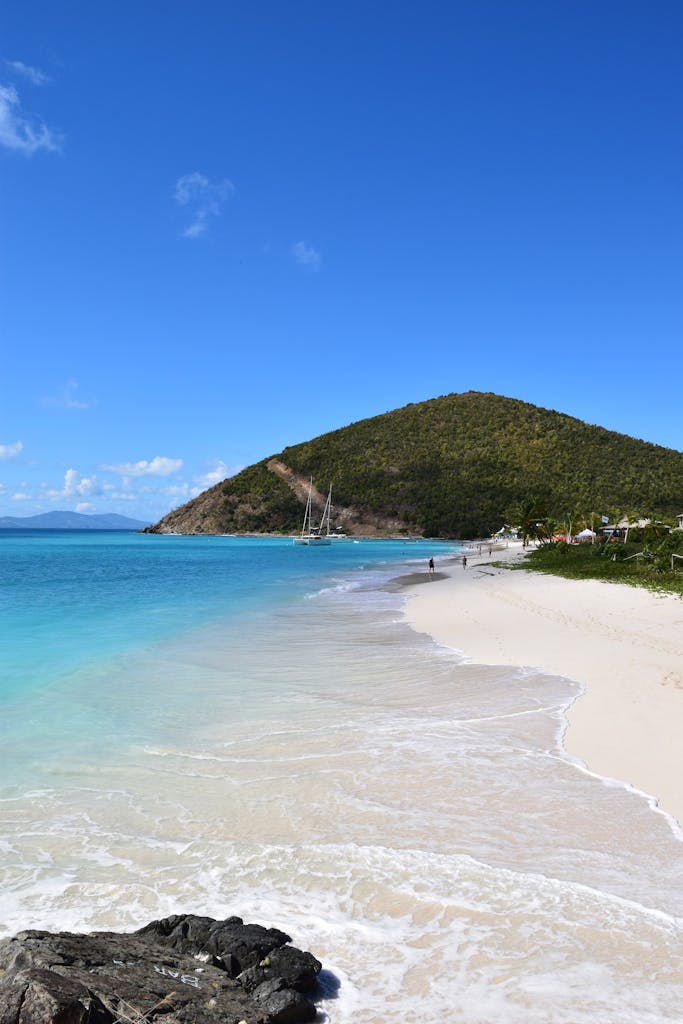
The British Virgin Islands encompass 50-some idyllic outposts, sliced by the Sir Francis Drake Channel, a fine sailing passage. There are fancier landings, but find me on Jost Van Dyke, a backwater with a population of maybe 300. The number of beach bars: 14 or so. These numbers add up nicely. There is no golf course, no casino, almost no cars — instead, three-square-mile Jost Van Dyke reveals the Caribbean distilled down to its essentials. There’s also no airport, and the usual route from a neighboring island is aboard a dilapidated ferry named When (the appellation makes sense more often than not) or private tours. Dolphins often chase vessels into Great Harbour, where a couple dozen simple structures line the beach on either side of the pier, but you’ll want to set out on foot to explore. At the very least, on an island of bartenders, you can count on the Painkiller — said to have been invented here — to be flawlessly prepared.
Don’t Miss: Foxy’s, the island’s preeminent hangout. The namesake proprietor serenades the crowd most afternoons. We also love the Soggy Dollar Bar, over on White Bay. The Painkiller is the cocktail of choice at both (pineapple juice, cream of coconut, orange juice, rum and — the pinnacle: grated fresh nutmeg on the top). Pair it with a delicious lobster roll.
Best Beach: From Great Harbour, take off your shoes and follow the sand track left over the scrubby hill 1.5 miles to White Bay, a cove of resplendent beauty. White Bay is also home to one of our favorite beach bars/eateries in the Caribbean, the infamous Soggy Dollar Bar, where Painkillers are expertly poured.
Independent Meanderings: Ask for directions to the Bubbly Pool, a natural jacuzzi on the other side of the island, where the Atlantic and Caribbean unload into a sandy bathtub.
Insider’s Tip: The British Virgin Islands are one of the Caribbean’s top snorkeling destinations. Take a guided shore excursion by boat to visit Norman Island, reputed home to pirates immortalized in Treasure Island, and to the Indians, tiny rock outcrops replete with vivid coral and tropical fish.
Take Me There: Access Jost van Dyke as a shore excursion from nearby Tortola. It’s often a port of call in its own right, as well.
Guadeloupe’s Les Saintes
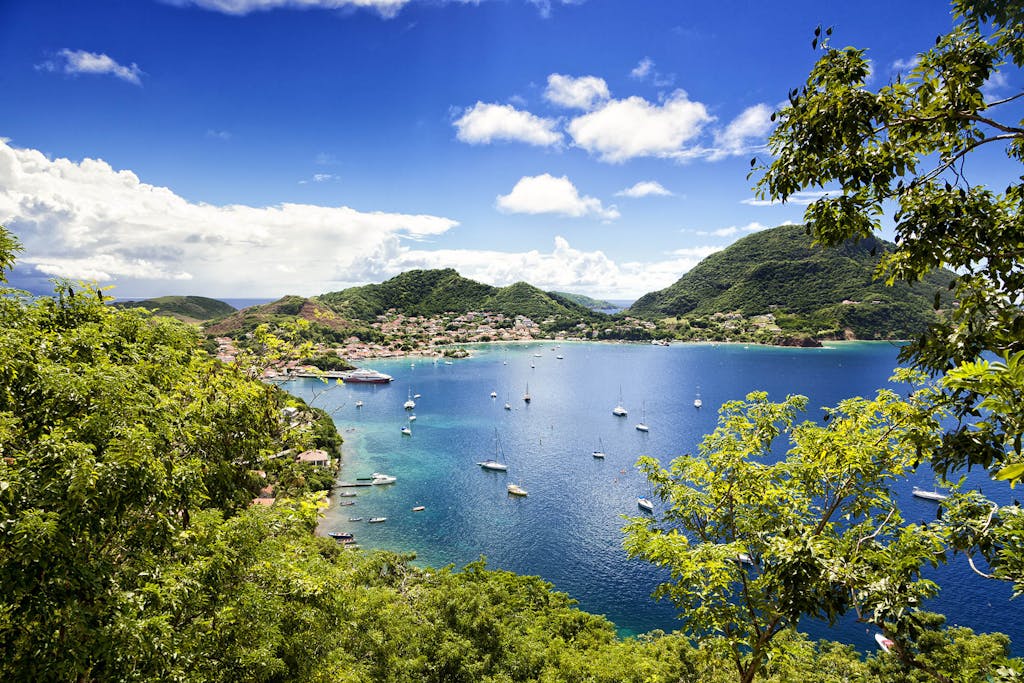
Why Les Saintes? A tiny, less tony take on what St. Barth was like half-a-century ago, this diminutive cluster of islets eight miles off Guadeloupe offers a full-on dose of French charm spiced with hard-scrabble fishermen. Terre-de-Haut, the main island, is perfectly sized for a day trip, and the port town is chockfull of options for accras de morue (fish fritters), ice cream and beer. Gaze up from the port and you’ll spot Fort Napoléon sitting atop the hill overlooking the harbor. Locals call it the Gibraltar of the Caribbean, which is a bit of an exaggeration, but it is large enough to have never seen a major battle, and the museum is worth a gander; the view spills for miles in all directions. Shopping won’t weigh you down, but save room for a local find: delicious punch coco, sold out the back door of many island homes in unlabeled bottles.
Don’t Miss: On arrival near the pier, women in colorful madras fabrics sell tourment d’amour — the agony of love — from wicker baskets. The salty-sweet coconut tarts are a specialty of the island, sold by the bagful.
Best Beach: It’s a one-mile walk or short taxi ride along a quiet country road from the port to Plage de Pompierre, which has bathrooms and picnic tables, but is otherwise blissfully undeveloped. On the opposite end of the island, Anse Crawen is a remote cove for those who like their sunbathing in the altogether.
Independent Meanderings: For a polished French West Indies lunch try Au Bon Vivre, offering beautifully presented tuna tartare, stuffed lobster tail, salads and elegant desserts.
Insider’s Tip: Explore the island’s reefs with a guide in a clear-bottom kayaks that reveal the undersea world in vivid color, without getting your hair wet!
Take Me There: Some Caribbean itineraries offer a handful of upcoming itineraries with Les Saintes as a port of call.
Montserrat
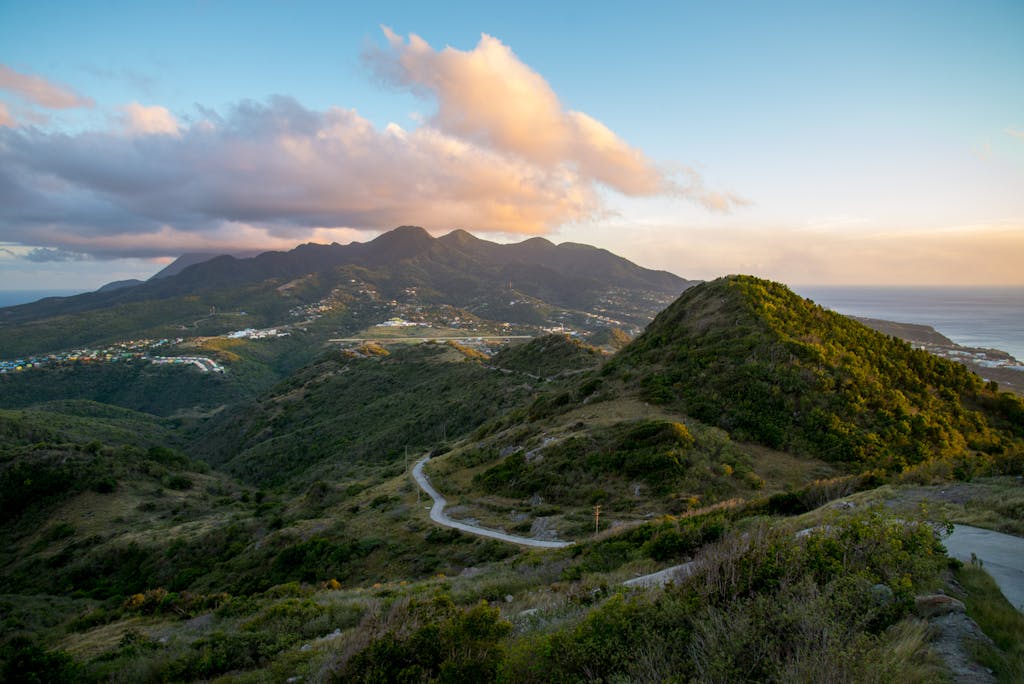
Why Montserrat? In its glorious heyday, Elton John and Paul McCartney once recorded albums here, but most of us are more familiar with a more recent tragedy: In 1995 volcanic Soufriere Hills awoke after 300 years of slumber, burying the island’s (evacuated) capital of Plymouth. The Emerald Isle, as it was once called, is now the Volcano Isle, and Montserrat is slowly rebuilding. Although no new lava has been coughed up for more than a decade now, the southern two-thirds of the island remains an “exclusion zone” — suitable only for supervised day tours and providing a fascinating glimpse into Mother Nature’s kitchen. The northern third is inhabited by roughly 5,000 residents, and sideshows of birdwatching, diving and hiking have made a rebound.
Don’t Miss: The ash-laden volcano is a commanding sight, and the ruin of the former capital is like a Caribbean Pompeii. The best accessible view is offered from the Montserrat Volcano Observatory, where the volcano panorama is accompanied by scientist-led tours of the monitoring effort.
Best Beach: From the port at Little Bay it’s a one-mile hike over the headland to Rendezvous Bay, the island’s one gold-sand beach. It’s undeveloped, and you might have it all to yourself. You can also hire a dingy to take you over.
Independent Meanderings: When conditions permit, guided tours of Plymouth are offered. Most of the town is consumed in ash, but taller buildings poke out from the flows and offer a time capsule to island life more than a quarter-century ago.
Insider’s Tip: Have a traditional Caribbean lunch on the verandah of Olveston House, longtime hideaway of the late Beatles producer George Martin. It’s now a cozy guest house, lined with photos by Linda McCartney.
Take Me There: Little Bay, handpicked to become Montserrat’s new capital after the destruction of Plymouth, is a port of call for Silversea in the Caribbean.
Nevis
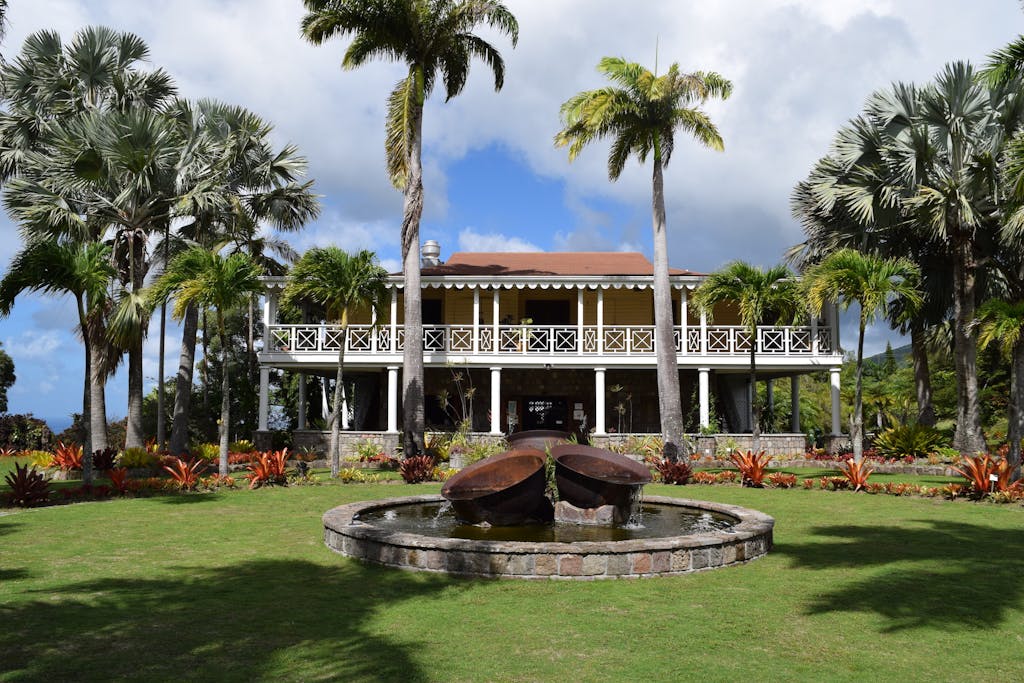
Why Nevis? One half of a twin-island nation (with neighboring St. Kitts), Nevis is infused with romance, history, hammocks strung across creaking balconies and troops of green vervet monkeys scampering across forested slopes. Lord Nelson married Fannie Nisbet here, and the island is the birthplace of Alexander Hamilton, of Broadway (and other) fame. Rustic plantation inns drape the shoulders of statuesque Nevis Peak, a near-perfectly shaped volcanic cone often seen wearing a fluffy white scarf of clouds. One of the 300-year-old inns, The Hermitage, may be the oldest wooden plantation home in the Caribbean, its sherbet-colored gingerbread cottages set amid lush gardens. Be careful: this bucolic but upscale lifestyle is highly seductive.
Don’t Miss: Book tee times in advance to play the Robert Trent Jones II-designed par-71 golf course at the Four Seasons Resort. The challenging greens snake across the slopes of Nevis Peak, offering eye-filling views to neighboring islands. If you’re more interested in gardening than golfing, The Botanical Gardens of Nevis showcases lovelies of the tropics, and includes a conservatory (modeled after London’s Kew Gardens) with waterfalls and parrot guardians that crave human interaction. The Thai restaurant here is a great lunch spot.
Best Beach: Four-mile Pinney’s Beach, just north of the cruise port and fringed by a former coconut plantation, is where the Four Seasons Resort chose to land, and amenities are close at hand. Sunshine’s, located cheek-by-jowl with the resort, appears improbably assembled from washed-up flotsam and jetsam and a CD player that percolates with Billie Holiday and John Lennon. The lemon- and honey-infused Killer Bee is the affable cocktail of the day.
Independent Meanderings: The modest Museum of Nevis History is the birthplace of America’s first Secretary of Treasury, Alexander Hamilton — he lived on the island until he was nine. Other sites worth discovering include the Jewish cemetery (dating to 1769) and St. John’s Fig Tree Church, where Lord Nelson and Fannie Nisbet’s marriage certificate is stored.
Insider’s Tip: Enjoy a languid lunch at one of the island’s storied plantation inns. There’s elegant Montpellier, where Princess Diana slumbered following separation from Prince Charles; chic Golden Rock, owned today by New York artists Helen and Brice Marden; and relaxed Nisbet, one of the region’s few beachfront plantations.
Take Me There: The beauty of a port call at Nevis is primarily getting out into the countryside. It’s also an option if your ship docks at the sister island of St. Kitts; shore excursions and public ferries offer transportation between the two.
